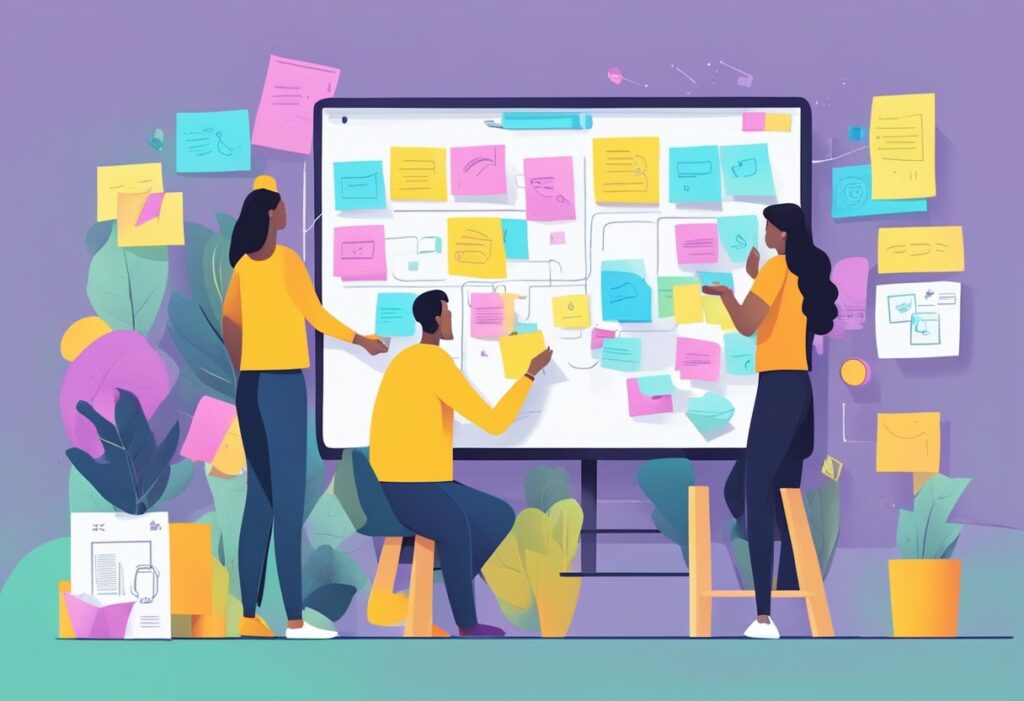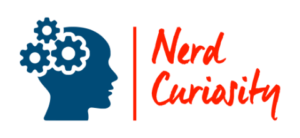The bridge between a product’s vision and its tangible form is often forged within the dynamic collaboration between product managers and designers. You may wonder how these roles, each with its unique approach to product development, come together to turn ideas into experiences that resonate with users. Product managers are the strategic navigators, steering the product’s direction, while designers breathe life into this vision with their creative expertise.

Product managers and designers work in unison through consistent communication, mutual understanding, and a shared commitment to user-centric design. While product managers articulate the what and why of a product, designers determine the how, melding functionality with aesthetics to craft a seamless user experience.
As you delve deeper into this article, you’ll gain insights into their collaborative workflow, uncover how these professionals navigate challenges and leverage each other’s strengths, and explore the techniques they use to ensure that the end product not only meets business objectives but also delights users. From the initial concept to the final polish, the symbiotic relationship between product managers and designers is pivotal to a product’s success.
Understanding Roles and Responsibilities

To work in harmony, it’s essential you grasp the distinct duties and overlapping tasks that bind product managers and designers together. Each role contributes uniquely towards the shared objective—launching a successful product.
Defining Product Manager Responsibilities
Your role as a Product Manager involves setting the overall vision for the product. You’re the one crafting strategies, outlining goals, and prioritizing features that will form the roadmap. You’ll engage in extensive research and employ data-driven decision-making to ensure the product aligns with market demands and organizational objectives. It’s also part of your job to foster collaboration among your team members, including designers, to turn that vision into reality.
Understanding Designer Roles
As a Product Designer, your main task is to translate the vision and objectives into an intuitive and visually appealing user experience. Your focus is on the product design, crafting user flows, and iterating on feedback. All the while, you’ll be collaborating closely with your team to ensure that the product fulfills user needs while aligning with business goals. Your input is crucial in the shared responsibility of creating a product that’s not only functional but also delightful to use.
Fostering Collaboration and Teamwork

When you aim to blend the expertise of product managers and designers, it’s essential to create a foundation for strong collaboration and teamwork. This effort pivots on clear communication channels and a mutual trust that acknowledges each person’s contribution.
Building Effective Communication
Communication is the lifeblood of any successful project. As a product manager, kick-start your interaction with designers by setting clear goals and expectations. Convey your vision, but also invite input to build a shared understanding.
- Articulate Objectives:
- Clearly state the end goal.
- Discuss timelines and key milestones.
- Exchange Feedback:
- Provide constructive criticism.
- Encourage designers to share their perspectives.
Remember, listening is as critical as speaking. Facilitate regular check-ins and use collaborative tools to keep everyone on the same page.
Nurturing Trust and Respect
Trust and respect are integral to fostering an environment where teamwork thrives. Acknowledge the designer’s expertise and give them the autonomy to bring their best ideas to the table.
- Show Appreciation:
- Regularly recognize contributions.
- Celebrate team victories, big or small.
- Encourage Experimentation:
- Support risk-taking in the design process.
- Learn from failures as a team and move forward.
By nurturing a supportive atmosphere, you encourage a sense of belonging and investment in the project’s success. This is where true innovation is born.
Integrating Goals and Processes

When you’re aiming to synergize the efforts of product managers and designers, it’s crucial to align both business objectives and design imperatives. Let’s explore how you can integrate goals and strategies, adapting the process for maximum efficiency along the way.
Aligning Business and Design Objectives
In your quest to merge the paths of design and business strategies, your first step is to ensure that everyone’s end goals harmonize. It’s like aligning the pieces of a puzzle; the picture is clear only when all the pieces fit perfectly. You ought to bring designers into the fold of product strategy discussions early on. This allows them to understand and incorporate business needs directly into their designs. By making priorities explicit, there’s less guesswork and more targeted creativity.
- Involve designers in strategy talks: Clarify business objectives together.
- Set priorities: Discuss which features take precedence based on business goals.
Adapting Processes for Efficacy
Once your objectives are in sync, your next move is to finetune the processes to get things done effectively. Imagine a relay race where the baton is smoothly passed from one runner to the next; that’s how seamless your workflow should be. Modify your team’s procedures to better escalate designs from wireframes to high-fidelity prototypes, ensuring a shared understanding of the roadmap at every stage.
- Iterate quickly: Shorten feedback loops to maintain momentum.
- Evolve processes: Be open to change and adapt methods as required for project success.
From Concept to Product: A Combined Workflow

Embarking on the journey from concept to product intertwines the expertise of product managers with the creativity of designers. It’s a dance of strategic execution and visual innovation.
Design Thinking and Ideation
You start with Design Thinking, a solution-based approach to solving problems. It’s about understanding your users and challenging your assumptions. This stage entails a flow of ideas where product managers and designers brainstorm — never alone but together. Their collaboration is rooted in the balance of practicality and the ambition to innovate. Interaction between the two is frequent and iterative, as they sketch and prototype potential solutions.
Balancing Feedback and Assumptions
Balancing feedback and assumptions is critical, like walking a tightrope with precision. You must weigh user feedback against initial assumptions. UX designers bring users’ feelings and behaviors to the table, while you, as the product manager, align this with the business objectives. Both of you must challenge the status quo to ensure a user-centered design without straying from the project’s scope.
Product Validation Stages
Finally, the validation stages serve as the crucible for your product’s success. These stages are a safety net, ensuring your solution’s viability before you build. Testing various aspects of the product, from usability to functionality, you and your design team can iterate and refine — crafting not just any solution, but the right one. This ensures that when your product steps into the light, it’s not just a solution, but a well-validated answer to your users’ needs.
Navigating Challenges Together

Navigating the collaboration between product managers and designers often entails finding effective solutions to common obstacles. Your focus should be on steering through engineering limitations while securing a unified vision for the user experience.
Dealing with Engineering Constraints
When you’re working within engineering constraints, understanding the technical boundaries is crucial. Think of these constraints as a canvas, not a barrier. Balancing design thinking with practical engineering realities enables you to refine your creative proposals, ensuring they are not only beautiful but also technically feasible. For instance, if an engineer indicates that a certain design might heavily impact the application’s performance, you need to assess alternative UX designs that align better with the available technical resources.
Finding Common Ground on User Experience
Finding common ground on user experience (UX) is a nuanced dance. You have to advocate for the user while staying grounded in reality. Your role involves translating user needs into actionable insights that can be woven into the product’s design. It’s a process that requires both product managers and designers to engage in design thinking, which involves empathy, ideation, and iterations. Remember, the impact of a well-executed user experience can often be the differentiator between a good product and a great one. Therefore, aligning on UX priorities and values is a collaborative effort that ensures the final product resonates with users and meets business goals.
Tools and Techniques for Collaboration

Collaborating effectively is key for you—a product manager—to forge a successful partnership with UX designers. Two popular design tools, Figma and Sketch, enable dynamic teamwork. With Figma, you can co-edit with designers in real-time, ensuring a seamless interaction design process. Sketch, while similar, offers plugins that cater to specific functions, enhancing your collaboration on user research and prototypes.
Creating a cohesive user experience isn’t just about the tools, it’s also about technique. For instance, involve your UX designer early on. Discussing even the scrappiest wireframes can spark valuable insights and prevent siloed work. Immerse yourself in user research; this synergy will not only align your visions but will also ensure user needs are at the forefront.
For effective collaboration:
- Use shared platforms for realtime feedback.
- Conduct regular cross-functional workshops.
- Always validate designs with user feedback.
Prioritize open communication; frequent, candid exchanges are a cornerstone of fruitful collaboration. Lastly, remember, the essence of your partnership thrives on the combined perspective you both bring to the table. Embrace it, and watch as your product evolves to meet and exceed user expectations.
Conclusion

Fostering a collaborative environment is crucial for successful product development. Your ability to translate customer needs and provide context to designers is essential. You share a common goal: to devise solutions that resonate with users and stand out in the marketplace.
Remember, empathy and communication go a long way. By understanding each other’s objectives and constraints, you can achieve a balance between functionality and design appeal. It is noteworthy that a synergy between your vision and the designer’s creativity often results in innovative products.
Regularly sync up with your colleagues; it will streamline the design process and minimize misunderstandings. Embrace tools and practices that promote teamwork, such as:
- Interactive workshops
- Prototyping sessions
- Customer interviews
Working closely with designers is more than just meeting project deadlines. It’s about building relationships that can endure the pressures of product development. Your combined expertise ensures that every feature not only looks great but also aligns perfectly with user expectations.
Ensure priorities are clear and trade-offs are discussed openly for a productive collaboration. Implementing an objective prioritization model like RICE can be beneficial. It helps evaluate the impact and cost of design decisions and encourages consensus.
